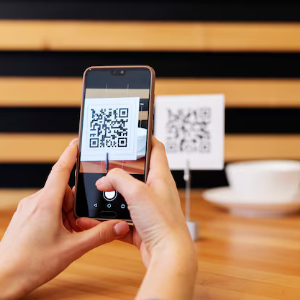QR Code Safety: Navigating the Risks of Scanning Smartly
September 26, 2024
QR codes have become ubiquitous in our everyday lives. From accessing restaurant menus to making payments, they offer a fast, convenient way to engage with digital content without the need to type out long URLs. Their ability to enable contactless transactions, especially during the pandemic, further cemented their role in various industries, providing a seamless, hygienic alternative to traditional exchanges. However, as with many technological advancements, cybercriminals have adapted quickly to leverage QR codes as a new tool for their malicious intent. In this article, we’ll explore the potential threats posed by QR codes and provide key safety tips to help protect yourself from these dangers.
The Threats Behind the Codes
Despite their convenience, QR codes come with a number of potential risks that users may not be aware of. Here are some of the most common threats:
- Malicious URLs: A QR code can easily be programmed to direct you to a website. While most QR codes lead to legitimate sites, attackers may create codes that send users to fraudulent or malicious URLs. These sites can host malware or phishing attacks designed to steal sensitive information, such as login credentials or financial data.
- QR Code Tampering: QR codes placed in public locations can be tampered with. Cybercriminals may print out their own codes and paste them over legitimate ones, tricking unsuspecting users into scanning them. These fake codes may lead to malicious sites or initiate harmful actions on a user’s device.
- Data Theft: Some QR codes are used to collect personal data, which can be misused if handled improperly. For instance, a malicious QR code can ask users to input personal information or download a seemingly harmless app that secretly tracks data.
- Man-in-the-Middle Attacks: In certain cases, attackers can intercept the data transmitted through a QR code, leading to a “man-in-the-middle” attack where the criminal can access sensitive information or manipulate the transaction before it reaches its intended destination.
- Rogue Payment Systems: QR codes are increasingly used in payment systems, especially in retail and restaurants. Fraudsters may deploy fake QR codes that divert payments to their own accounts instead of the legitimate merchant’s account, leading to financial loss for both businesses and customers.
Tips for Safe QR Code Scanning
While these threats are concerning, QR codes can still be used safely as long as you take proper precautions. Follow these security tips to protect yourself when scanning QR codes:
- Verify the Source: Always make sure that the QR code is from a trusted source. If the code is placed in a public or suspicious location, think twice before scanning it. Check for any signs of tampering, such as stickers placed over original QR codes.
- Use a QR Code Scanner with Previews: Some mobile apps allow you to preview the URL or action before fully processing the QR code. This feature can help you verify whether the destination link is legitimate before visiting the site or downloading content.
- Avoid Scanning Random Codes: Be cautious about scanning codes from unfamiliar or unsolicited sources, especially if you receive them via email, SMS, or social media. Criminals often use QR codes in phishing attacks, disguising them as legitimate messages.
- Update Your Device’s Security: Keep your smartphone or tablet’s operating system, browser, and security software updated. Having the latest security patches can help prevent malware or malicious apps from infecting your device if you accidentally scan a compromised QR code.
- Manually Enter URLs: If you’re not sure about a QR code, it may be safer to manually enter the website address instead of scanning the code. This eliminates the risk of being redirected to a malicious site.
- Limit the Information You Share: Be cautious about what information you provide after scanning a QR code. Avoid entering personal or financial details unless you are absolutely certain the website is secure and legitimate.
- Enable Multi-Factor Authentication (MFA): If a QR code leads you to a service where you enter login credentials, ensure that MFA is enabled for that account. This provides an extra layer of security, reducing the risk of unauthorized access.
- Use Secure Payment Methods: When using QR codes for payments, rely on trusted apps or services like Apple Pay, Google Pay, or other well-known mobile payment platforms that offer strong encryption and transaction monitoring.
Visit the FNBM Security Hub for more safety tips.
Posted in Security Updates

